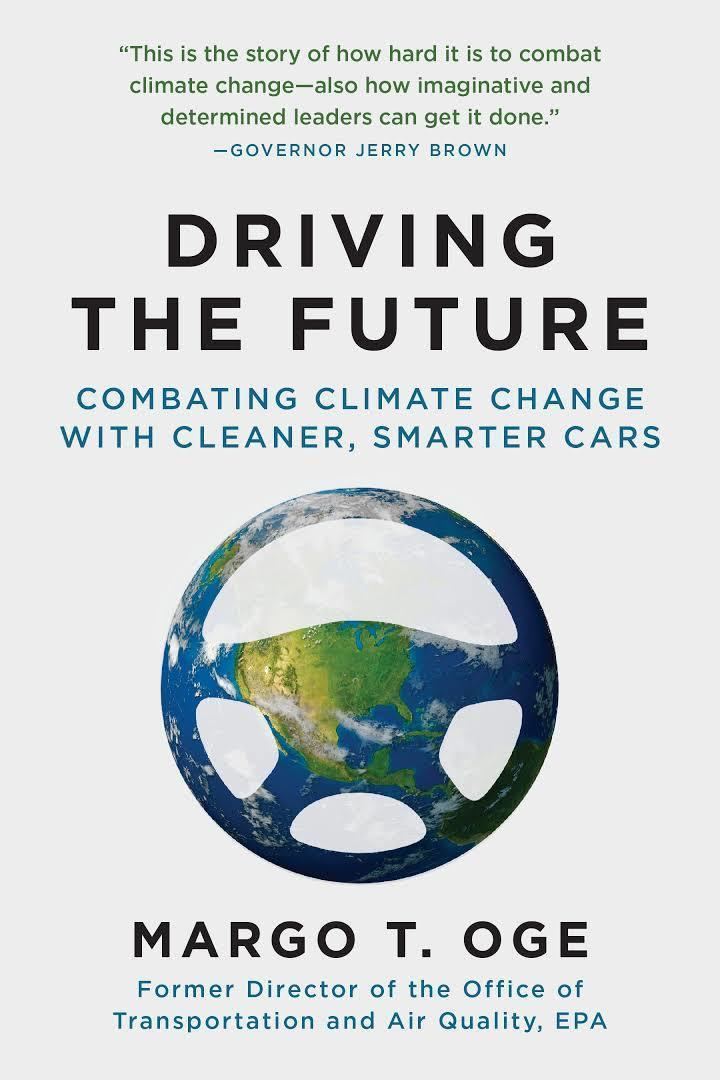7.8 /10 1 Votes
Language English ISBN 978-1-62872-538-4 | 3.9/5 Goodreads Publisher Arcade Press Originally published 2015 Genre Non-fiction | |||||||||||||||||||||||||||||||||
 | ||||||||||||||||||||||||||||||||||
Driving the Future: Combating Climate Change with Cleaner, Smarter Cars is the first book by former Environmental Protection Agency senior director Margo T. Oge. The book covers climate science, politics, regulations, auto technology and proposes how to meet greenhouse gas reduction goals. It is organized into three sections.
Contents
Section 1
In the first, Oge reviews the origins of climate change theory dating back to the 1800s and the politicization of climate change-related issues beginning in the 1980s.
Section 2
The second section details an ultimately successful effort to regulate greenhouse gas emissions from passenger vehicles. This effort resulted in changes to both Corporate Average Fuel Economy and, under the authority of the EPA, established the first ever federal greenhouse gas standards. As a result of these rules, manufacturers’ fleets must average 54.5 mpg by 2025. The Economist magazine ranked them as the sixth most effective international action to reduce greenhouse gas emissions.
Section 3
The third section examines the necessity and possibility of much more dramatic increases in fuel economy while accelerating the reduction of greenhouse gas emissions. Oge argues that, to meet the goal of a less than 2 degree Celsius rise in global temperatures, cars and trucks will have to average the equivalent of 180 mpg. Oge writes that this is possible using a combination of auto technologies, including more efficient internal combustion engines, battery electric, fuel cell and hybrid vehicles, higher energy density batteries, non-food stock bio-fuels, autonomous vehicles and connected vehicles.
Global trends
Oge also predicts that several global trends, including the growth of mega-cities, internationally converging fuel economy regulations and demand-side peak oil will ultimately result in reduced greenhouse gas emissions from passenger vehicles. Oge also examines the impact of social trends, such as a reduced rate of vehicle ownership and driver’s licenses as well as increasing use of ride-sharing and on-demand cars among Millennials in OECD nations.
The book combines primary source research, Oge’s first-hand knowledge of events and dozens of interviews with technical, environmental, regulatory, policy and legal experts.
